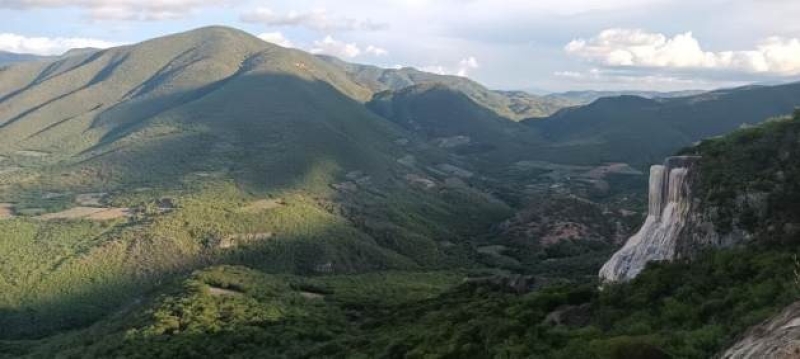- Developing countries united for a Just Transition Mechanism |
- UN Warns of Worsening Hunger Crisis Threatening Millions |
- Alamdanga’s disabled Zahurul sees the world through his hands |
- Touhid dismisses Indian media reports linking Dhaka for Delhi blast |
- IOM, HCI partner to combat human trafficking in Rohingya camps |
Heat and Neglect Ignite Mexico’s Growing Wildfire Crisis

View of a forest in the southern state of Oaxaca, which is one of the most impacted by forest fires in Mexico.
“This issue has been spiralling out of control year after year. The first responders are the communities themselves. There is no information explaining what a wildfire is in our native language (Mixtec) — not even a pamphlet or video that can be distributed,” says Estela Aranda, a 30-year-old Ayuuk jä’äy (Mixe) student of indigenous language education from the Santa Anita community in Copanatoyac, Guerrero.
She explains that her community lacks the knowledge to handle serious fires because “there has been no guidance from people who know how to manage them.”
In 2024, a major fire alarmed the community, followed by another in nearby Tlapa de Comonfort in March. “The first fire lasted several days and destroyed a lot of vegetation,” says Aranda. Her 1,364-member community relies mainly on small-scale livestock farming and cultivating corn, beans, and squash.
“Nature feeds us, guides us, and connects us. When it suffers fires, we care for it with all our heart because it is everything to us,” she adds.
Located about 350 kilometres south of Mexico City, Copanatoyac has seen a surge in fires since 2023. After three fires destroyed over 1,000 hectares in 2024, two more burned 114 hectares this year. Guerrero — one of Mexico’s poorest and most violence-plagued states — now ranks fifth nationwide for historically burned areas.
In neighbouring municipalities, fire incidents increased from nine (affecting 1,535 hectares) in 2022 to 12 (affecting 1,941 hectares) in 2025.
Experts blame rising heat, drought, and weak governance. The 2020–2024 Fire Management Programme and regulations on the use of fire in forest and agricultural land have failed to curb outbreaks.
Since 1970, Mexico has recorded more than 397,000 fires, burning over 18 million hectares. Despite a slight decline in 2025 due to heavy rainfall, the average area burned per fire nearly tripled between 2020 and 2025.
Officials acknowledge that about one-third of the fires originate from agricultural activities, while another third have unknown causes. Impunity for intentional fires and a lack of preventive education have worsened the problem.
Budget cuts have also undermined fire control efforts. The National Forestry Commission (Conafor) has seen its funding fall from $573 million in 2014 to just $133 million this year. Direct firefighting support was eliminated in 2020, leaving communities to manage land clearing and firebreak installation largely on their own.
Conafor attributes the fires to the climate crisis and says states and municipalities bear primary responsibility for management.
Neighbouring Oaxaca faces similar challenges. Juan Reyes, an indigenous Zapotec from Las Cuevas, recalls how fires raged for days before help arrived. “We couldn’t handle them. The authorities didn’t respond in time,” he says.
For many rural Mexicans, the core issue is the lack of timely, culturally relevant information. “They should send information so people can be careful,” Reyes insists.
Researchers and residents alike call for a new approach: integrating traditional knowledge, training communities, and recognising fire as both a risk and a natural part of the ecosystem.
“There’s a lot of work to be done,” says academic Diego Pérez. “It’s not just about extinguishing fires — it’s about restoring the balance and empowering communities to protect their forests.”

